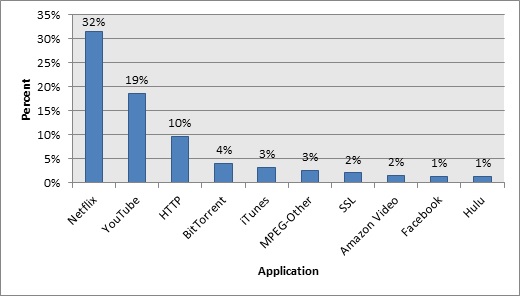Easy to access high-speed Internet has changed how Americans access their media. Streaming video sites like Netflix and YouTube account for more than half of downstream Internet traffic. These tectonic shifts require new infrastructure investments to ensure quality and consistent delivery. These changes also create opportunities for consumers across the economy in healthcare, education, and entertainment. The speed at which Internet services are evolving presents challenges for government regulators tasked with ensuring access to disadvantaged populations. It also strains a national broadband system that faces steep demands for faster Internet from consumers.
Peak Downstream Traffic
Private Sector Leaders Meet to Discuss the Future of Content Delivery
On May 2nd, the Center for Technology Innovation at Brookings will host a panel of industry experts to address the future of digital content delivery in the United States, including a conversation on how the explosion of video streaming is changing how we consume content. Darrell West, Vice President of Governance Studies and Founding Director of the Center for Technology Innovation will lead a discussion on his findings and data from the forthcoming paper “Video Streaming and Content Delivery”. Derek Aberle the President of Qualcomm, John Donovan the Senior Executive Vice President at AT&T, and Jeremy Legg a Senior Vice President at Turner Broadcasting system will join him.
Join the Conversation
If you are interested in attending you may find the information to RSVP here. If you are unable to attend in person but would still like to watch the event please join the webcast online. To participate in the conversation, please tweet at the hash tag #TechCTI.
[1] Sandvine, Inc. “Global Internet Phenomena Report.” (2013). <https://www.sandvine.com/trends/global-internet-phenomena/>



Commentary
How to Ensure that Streaming Video Doesn’t Crush the Internet
May 1, 2014